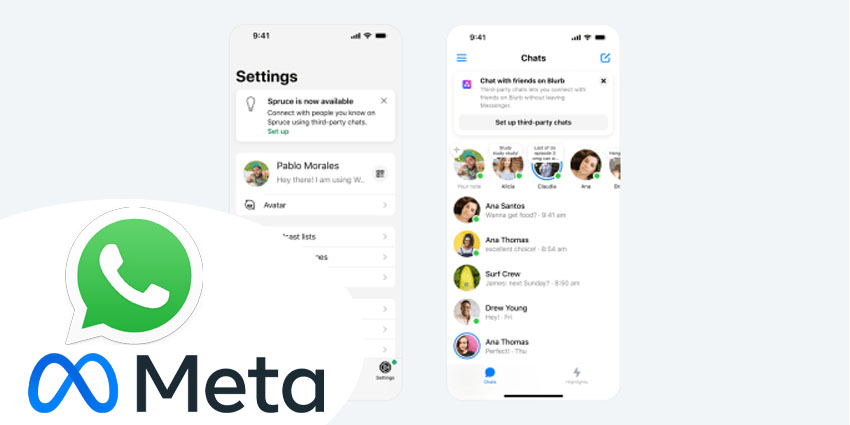Ford has moved almost 170,000 employees onto Microsoft Teams, in what the automotive giant has described as a major step in its digital workplace evolution.
The aim was uncomplicated: eliminate the messy tangle of collaboration tools that had taken root across the business.
Developers often used one platform, business teams another, and meetings could be hosted on a third.
The outcome? Workflows slowed, information splintered across departments, and hybrid teams struggled to coordinate even routine tasks.
“We had several collaboration tools, and each group was deeply invested in their own,” said Justin Hamilton, Executive Director of Digital Workplace Technology at Ford Motor Company.
“So, the challenge wasn’t just migrating. With developers in one tool and business teams in another, plus a third solution for meetings, unification required a fundamental change to the way people work.”
That fundamental change offered Ford an opportunity to streamline its digital workplace. But it also required staff to abandon systems many had relied on for years.
The company’s strategy blended persuasion, technical scaffolding and steady internal pressure to move everyone onto a single platform.
A Carefully Managed Shift to Teams
Ford selected Microsoft Teams with Teams Premium as its new centrepiece.
But company leaders appear keen to emphasise that it wasn’t a forced march.
“We didn’t arbitrarily force the change,” said Eric Williams, Director of Collaboration. “We evaluated Teams and collected data to show why it made the most sense for everyone. Then we drove awareness early, built tools that made it easy, and encouraged adoption with ongoing education.”
Custom connectors provided a safety valve. Staff could pull their chat histories, channels and meetings into Teams, choosing whether to migrate 30 days, 90 days or a full year of past activity.
The option softened the transition for users wary of losing context mid-project.
Still, the move represented a considerable consolidation of digital power inside Ford.
With one decision, the company tied its communication, file-sharing, meeting structure and collaborative workflows to a single vendor ecosystem.
AI Tools Impress Workers – but Lock-In Concerns Linger
Ford executives said that Teams’ extensibility made the migration worthwhile.
“Many of the existing tools were deeply embedded in departmental or organisational workflows,” said Andreas Demetriou, Product Group Manager.
“But once they saw how Teams threading worked, and how their apps could live inside Teams, they started to embrace switching.”
Teams’ advantage, in Ford’s view, lay in its ability to host Power Apps, plug into SharePoint and OneDrive, and support custom workflows.
This allowed the automaker to fold its existing processes into one interface rather than stitch multiple systems together.
AI features reinforced Microsoft’s appeal.
Meeting notes now appear automatically, complete with action items and speaker-attributed insights. Intelligent recap surfaces key decisions without requiring anyone to rewatch an hour-long meeting.
Ford also adopted Teams Premium’s security-heavy features, such as watermarking and end-to-end encryption. “Security and identity were nonnegotiable,” Hamilton said. “Teams gave us the controls we needed without compromising usability.”
Yet relying on Teams for everything brings its own tensions.
The more functions Ford shifts into Microsoft’s ecosystem – from communication to automation – the harder it becomes to diversify later.
Efficiency Gains – and a Quiet Reshaping of Internal Power
Ford says the migration is delivering measurable benefits.
Employees now default to Teams for meetings, chat, file sharing and access to internal apps. Cross-functional work has become more visible. Satisfaction scores have risen.
“Teams became the place where work happens,” Hamilton said. “We’ve doubled our satisfaction scores for collaboration and are saving millions by using a single tool.”
Fewer help-desk tickets suggest a reduction in technical friction.
Standardised onboarding makes it easier for new employees to decode Ford’s processes.
And by using Teams federation, Ford has shortened response times with suppliers. “It’s easier to get things done when everyone’s in the same space,” Williams added.
But standardisation also reduces departmental autonomy.
Teams now structures how meetings run, how information moves, how workflows develop and even how employees build internal tools.
Low-Code Tools Expand Access
One area Ford highlights is low-code development.
With Power Platform baked into Teams, employees can build their own applications and automate manual tasks without waiting for IT.
The company portrays this as a democratising force – and it may well be – but it also sets new expectations.
If employees can build their own tools, managers may come to expect it.
The boundary between end user and developer begins to blur, raising questions about support, governance and long-term maintenance of these internally crafted solutions.
Ford is also preparing to embed intelligent AI agents across its workflows.
These agents will summarise documents, take on administrative tasks and accelerate decisions.
The ambition is clear: more automation, less manual labour and a more efficient digital workplace.
A Cultural Rebuild
The most striking change, according to Ford, is cultural.
Teams has dissolved the company’s longstanding tool-based silos, and cross-department conversations have become faster.
Decisions, they say, happen sooner. Workflow visibility has improved.
What once looked like a digital transformation project now resembles a broader organisational redesign.
Ford has not only replaced tools, but also reshaped how information flows, how teams communicate and how decisions move across a global network of employees.
But the migration’s ultimate success will depend on more than adoption figures or satisfaction scores.
It will hinge on how Ford manages its increasing reliance on a single, centralised collaboration platform – and whether the promised gains outweigh the risks of placing so much of its digital infrastructure in one place.







